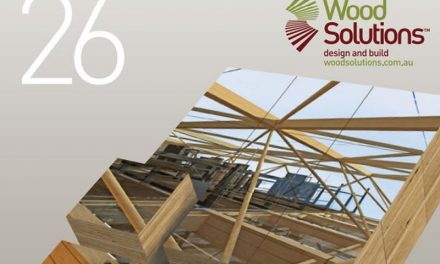Exposure to wood products and interiors has measurable health benefits, similar to those created by spending time in nature, a new report commissioned by Planet Ark has found.
There are significant health, wellbeing, and environmental benefits to incorporating wood and timber products into our everyday lives, yet less than one in two Australians make this important connection.
Released in the lead up to World Wood Day on Saturday 21 March, these findings were published in Planet Ark’s Wood – Housing, Health, Humanity report.
The report explores numerous studies analysing the health and wellbeing benefits of wooden interiors in homes, businesses, places of learning, and places for healing, as well as the results of an independent Australian survey.
“An increasing body of research is beginning to show that being surrounded by wood at home, work, or school has positive effects on the body, the brain, and the environment, and can even shorten hospital stays through reduced recovery times,” said Chris Philpot, Make it Wood Campaign Manager at Planet Ark.
Increasing urbanisation means that people have less access to nature in their daily lives and Australians on average now spend over 90 per cent of their time indoors.
This has well-reported health consequences, so understanding how to incorporate the many benefits of nature into our indoor environments is an increasingly important area of research.
The studies examining the effects of wooden rooms and furnishings clearly demonstrate that the presence of wood has positive physiological and psychological benefits that mimic the effect of spending time outside in nature.
The feelings of natural warmth and comfort that wood elicits in people have the effect of lowering blood pressure and heart rates, reducing stress and anxiety, and increasing positive social interactions.
Wood products within a room have also been shown to improve indoor air quality by moderating humidity.
These benefits are particularly important for environments where it is difficult to incorporate nature indoors, such as hospitals, where strict health guidelines may prevent the presence of plants, and office environments, where views from the window are of roads and neighbouring concrete buildings.
An increasing number of architects who design buildings for healing, learning, and relaxation are now incorporating significant amounts of wood into their structures to capitalise on its health and wellbeing benefits.
According to Planet Ark’s survey, an overwhelming 96 per cent of Australians agreed that wood is visually appealing and has a natural look and feel. Even though many people don’t understand the health and wellbeing benefits of wood, they appeared to be innately drawn towards wood and instinctively react to the feelings of warmth, comfort, and relaxation it creates.
When Planet Ark presented survey participants with images of two rooms – one furnished with a wooden chair, desk, blinds and other items made from wood, while the other showed the same items made from plastic – two out of every three people said they preferred the wooden room.
This occurred despite one in two people saying they were completely unaware that wood had associated health benefits.
In addition to its health impacts, the use of responsibly sourced, certified wood can have significant positive environmental outcomes and help reduce climate change.
Yet only six out of ten survey participants understood that wood stores carbon and creates less carbon emissions during production than steel and concrete.
With the global population growing, increasing rates of urbanisation and the construction of new buildings is inevitable.
Wood is one of the oldest and most versatile building materials used by humanity and its revival shows it has a large part to play in building a healthy future.









